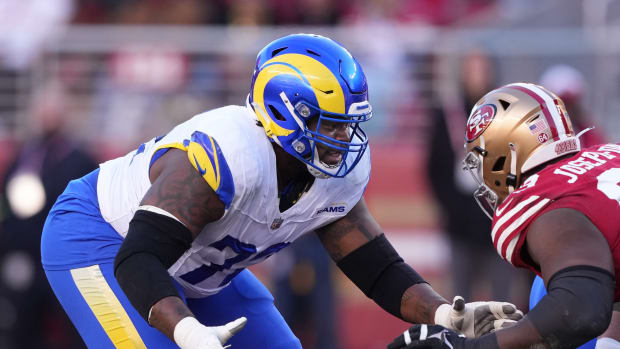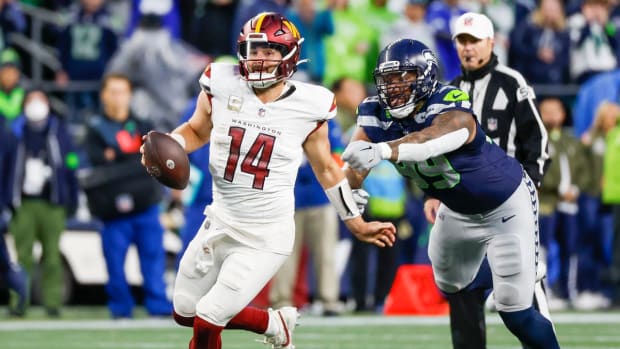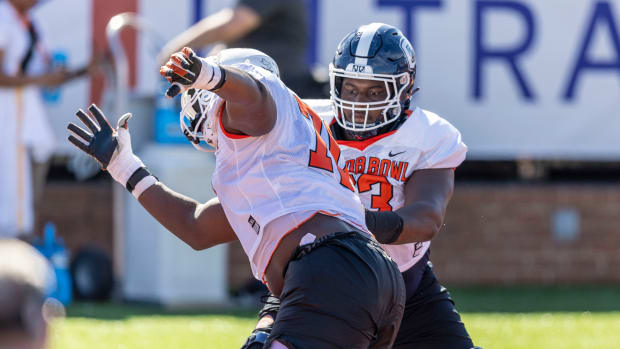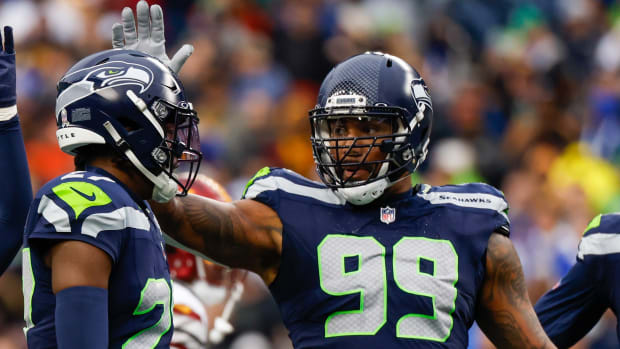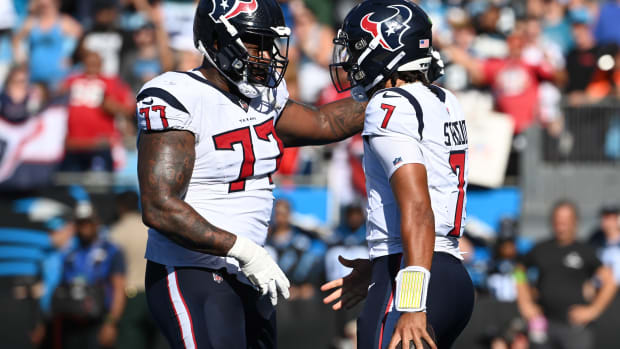Motion, Analytics, and Other Ways Brian Schottenheimer's Seahawks Attack Pre-Snap
There’s been much discussion over pre-snap motion amongst the football analytics community. There are obvious advantages when an offense has a man in motion at the snap of the football. Defensive confusion, coverage indicators, alignment changes, and leverage advantage can all be created by motion.
It’s not surprising that plays with pre-snap motion have higher EPA per play than those that do not. However, the data around the subject needs more distinction of types of motion. Here are two scenarios that support this concern:
Scenario 1: Is the motion a blocker coming into the box to kick out the end on a quarterback run play - like the Baltimore Ravens like to do? These runs are very efficient, giving the offense +1 in the box, and relatively rare in the NFL.
Scenario 2: How much of the motion is jet, a concept often paired with play action? The general effectiveness and efficiency of play action muddies the picture, as its greatness would aid the success of the jet motion. Sports Info Solutions' Bryce Rossler tweeted that, since 2017, 80 percent of the net EPA generated by passing plays with jet motion arrived via play action.
Seattle’s pre-snap motion was lower in Week 2 than Week 1 of the 2020 season. It works in certain offensive designs and with some personnel better than with others. Motion asides, there are other pre-snap ways for offenses to gain the strategic advantage before the ball is snapped. One of these is shifting, where players move around but get set before the snap. Brian Schottenheimer’s Seahawks do this regularly.
Here's a page from the 2005 San Diego Chargers offensive playbook. Though coordinated by Cam Cameron, Schotty - the quarterback coach under Cameron at the time - appears to have stuck to these principles surrounding movement:
The other way of winning pre-snap is intelligent alignment, which can be paired with motion or shifting too. It’s a safe bet that Schotty gives Russell Wilson alignment advantage if motion or shifting isn’t present on a play. The way to do it is having a running back or tight end as the widest receiver to one side of the formation.
Sometimes, once you know what matchup you are beating and what coverage you are getting, you don’t need to complicate or risk ruining the picture.* You just need Wilson to keep cooking and attack the defense. Tight end Greg Olsen’s score in Week 1 against the Atlanta Falcons was the perfect illustration of this, as seen in the video above.
* Wilson needs a particularly clear idea of what he is getting - a theory for the sometimes slow pace at the line of scrimmage of Seattle's offense is that the quarterback likes/needs as much time as possible reading the defense before the snap. That's an article for another day.
